Bridges are horizontal structures that extend between pillars or supports and are designed to bear perpendicular loads exerted due to the movement of people or vehicles. Their supports must be able to withstand the weight of the bridge, and the span must be structurally strong to support the consistent variable loads being applied. The structural design of a bridge varies according to the specifications, but structural safety and stability, along with optimum cost, are of the utmost importance. All these factors result in different types of bridges, and this article focuses on the main types of bridges from a structural design point of view.
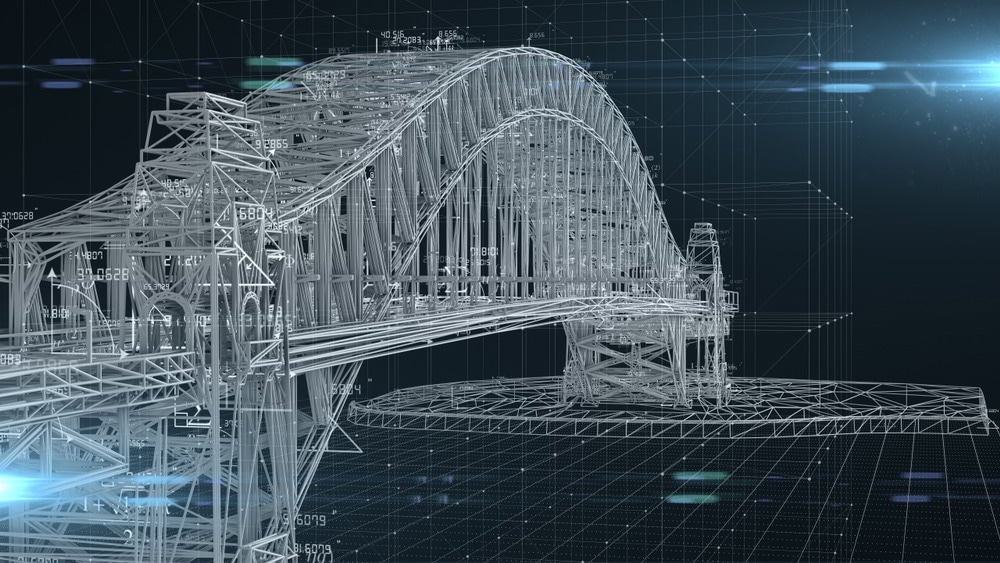
Image Credit: Immersion Imagery/Shutterstock.com
Arch Bridges – A Historical Form of Bridge Construction
The ends of arch bridges are supported by abutments. The bridge's weight is supported by the abutments on both ends. The earliest documented arch bridges were constructed by the ancient Greeks. The primary structural element of these bridges is an arch, which is always positioned below the span. They are built with one or more joints depending on the load and tension forces they must withstand.
The arch takes up the compressive loads and this type of bridge has tremendous inherent strength.

Image Credit: CK Foto/Shutterstock.com
A study published in Structure and Infrastructure Engineering focuses on masonry arch bridges and their safety. As per the article, there are approximately 40,000 brick arch bridges in routine use on motorways, railways, and channels in the United Kingdom, accounting for approximately 40–50% of the total bridge stock.
Traditionally, arches were constructed from a single band of large cut stones or multiple concentric rings or strata of brickwork interconnected by headers. Seismic evaluation studies have verified that masonry arch bridges are generally earthquake-resistant. Extremely few instances of collapses involving a substantial portion of a masonry arch bridge after an intense seismic event have been documented.
What are Beam Bridges?
Beam bridges, which comprise perpendicular supports and horizontal beams, are the earliest and basic bridge type. By bending, a beam transports perpendicular loads being exerted. The bending of the beam due to loads causes horizontal compression to occur at the top. Concurrently, horizontal tension is applied to the underside of the beam. These structures are only ideal for small lengths, but they can be used for longer spans by adding additional supports called piers in the middle.
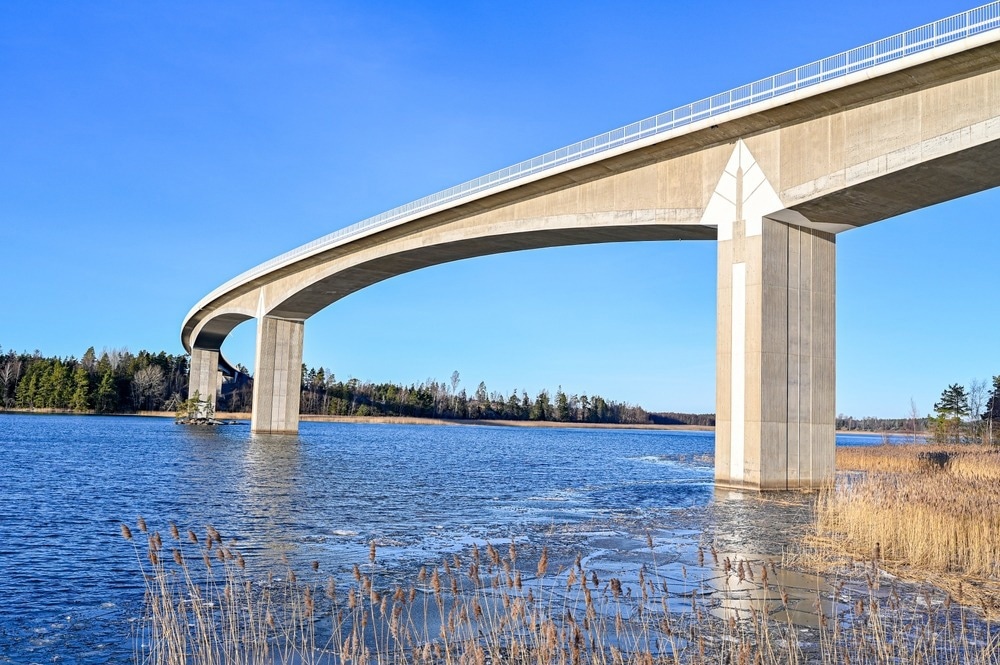
Image Credit: bluejava1/Shutterstock.com
An article published in the journal Structural Control Health Monitoring mentions the recent trends and future outlooks for damage identification in beam bridges along with other bridge types.
The method of identifying damage to a bridge via a modal system is the most prevalent. The dominant traits for morphological authentication and damage perception are modal attributes, which are frequently derived through operational modal evaluation, where the bridge structure is typically presumed to be stimulated by an adequate broadband impulse. Its most widely recognized techniques include mode-shaped-based and natural frequency-based modal damage identification.
An Overview of the Truss Bridge
A truss bridge divides the applied load throughout an assortment of tiny interconnected sections. For smaller bridges, structural timbers or box girders are employed to construct bridge trusses, which are typically welded or fastened together in an array of triangles. Bending causes compression in the upper (or horizontal sections), tension occurs in the bottom chords, whilst compression or tension, depending on their orientation, occurs in the lateral and diagonal elements.
Truss bridges are easily constructed and are less expensive than their counterparts. Composite truss bridges are being used in engineering projects worldwide, as per an article published in the Journal of Traffic and Transportation Engineering. The article states that composite truss bridges composed of hollow structural sections (HSS) are efficient for long-span applications.
Traditional composite truss bridges with HSS sections consist of a concrete deck platform and a tubular truss framework. For bridges with spans between 40 and 120 meters, the optimization of composite truss structures with concrete-filled steel tubular (CFST) chords has been implemented.
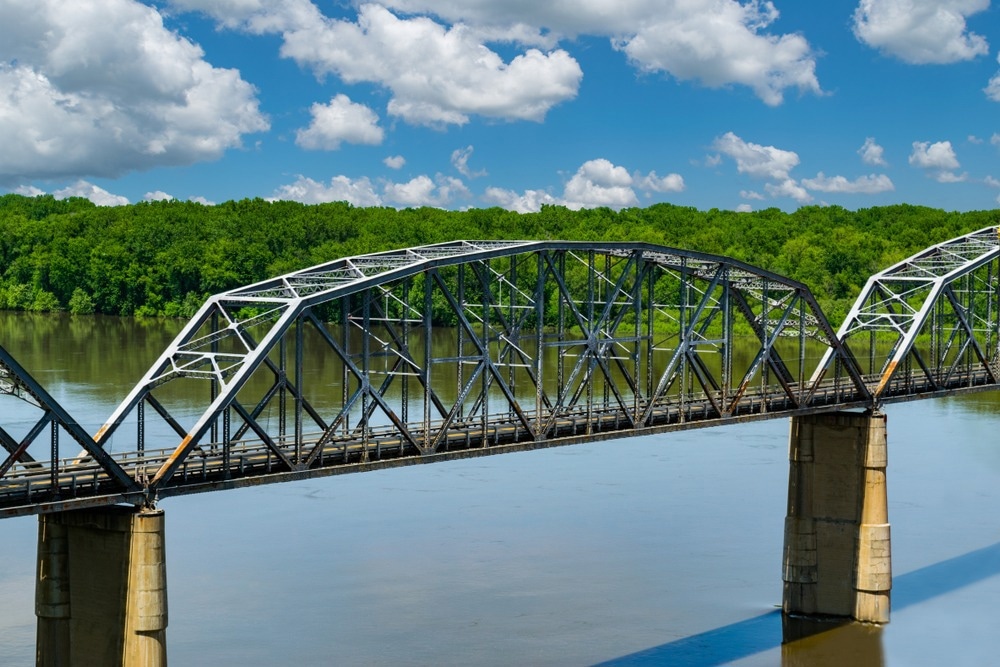
Image Credit: Creation Media/Shutterstock.com
In general, structural configurations can be divided into planar trusses and three-dimensional trusses. There are three varieties of cross sections: rectangular section, triangular section, and trapezoid 3D section.
In a planar truss, two overhead and two bottom chords are utilized to create a rectangular or trapezoidal section. The chord sections are linked laterally to the cross and lateral reinforcement sections. The Nantenbach Bridge in Germany is a composite, variable-depth girder bridge. Triangular and trapezoidal cross-sections are commonly used for 3D trusses.
Cantilever Bridges
Some bridges are constructed using a cantilever design. This type employs a vertically-anchored pillar to support a horizontal superstructure that extends from either side or both across the stretch. It is typically constructed with three spans, the outer spans of which are both moored to the shore and protrude out over the waterway to be crossed.

Image Credit: Roop_Dey/Shutterstock.com
An article published in Soil Dynamics and Earthquake Engineering introduced a novel integrated anchoring technology for cantilevered bridges. Deep excavations and precipitous gradients have been stabilized with soil anchoring technological advances extensively. The earth anchors were employed by the researchers to link the cantilevered bridge superstructure to the high-strength bedrock behind the structure's abutments. In SAP2000, a nonlinear time-history analysis was conducted.
Results demonstrated that incorporating ground anchors affixed to the bridge deck reduced horizontal displacements substantially. Under tectonic stimulation, the maximal displacement was reduced by roughly 82%.
A Brief Overview of Suspension Bridges
The primary components of suspension bridges are a set of principal suspension cables spanning two structures and affixed at each end to a deeply buried anchor. To sustain the deck below, smaller perpendicular suspender cords are affixed to the main cables.
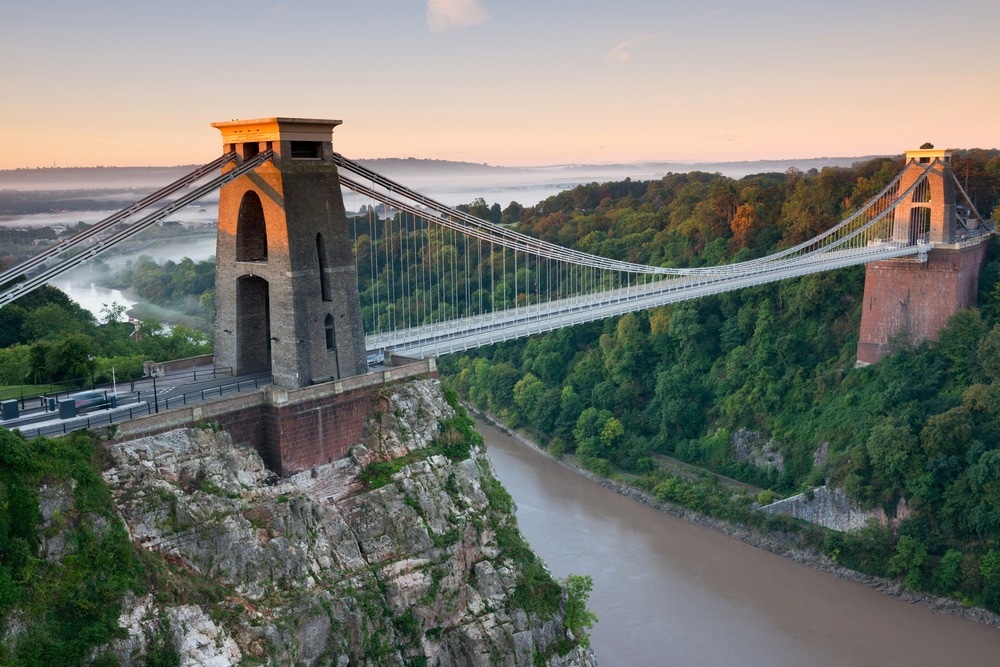
Image Credit: stocker1970/Shutterstock.com
Since the inauguration of the Union Bridge on the Scotland-England frontier in 1820, suspension bridges have played a crucial role in the development of civil infrastructure, allowing for the creation of permanent connections between locations previously isolated by vast distances or deep oceans. Although suspension bridges are very valuable, they are prone to excessive wind-induced vibrations and incur substantial maintenance costs, which is a major limiting factor.
Cable-Stayed Bridges
Deck, towers, and cable stays are the primary structural components of cable-stayed bridges. Multiple slanted cable stays are utilized to sustain the superstructure along its entire length. This permits the construction of large-span platforms with low deck heights. The deck functions like a single structure that is flexibly stabilized by the inclined supports, which, in addition to offering vertical support, also impart natural pretensions to the deck. These structures have indisputable visual superiority due to the slenderness of the superstructure and the arrangement of the cable suspension scheme.
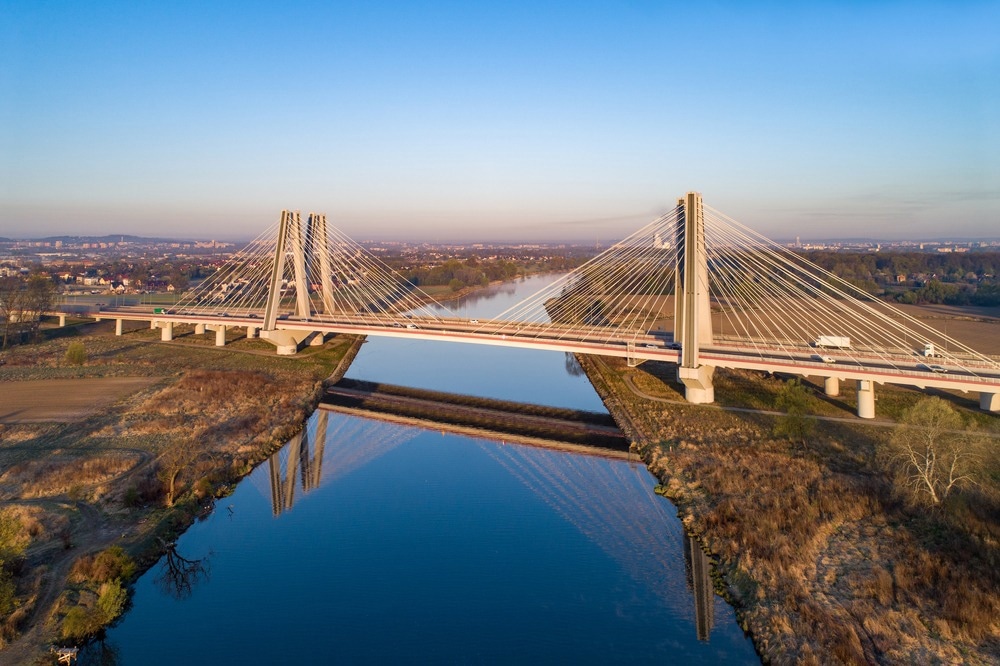
Image Credit: Nahlik/Shutterstock.com
An article published in IOP Conference Series: Earth and Environmental Science mentions a novel hybrid extradosed bridge classified as a partial cable-stayed bridge. The extradosed bridge is an engineering transition between continuous rigid frame bridges and cable-stayed bridges. The extradosed bridge's beam height is approximately one-half that of the continuous beam bridge. It can be built employing the same cantilever casting technology as the continuous girder bridge.
More from AZoBuild: The Impact of Different Building Materials on Construction Costs and Timelines
References and Further Reading
Billington et. al., (2023). Bridge Engineering. [Online]
Available at: https://www.britannica.com/technology/bridge-engineering/Truss
BugRentz, (2021). Types of Bridges. [Online]
Available at: https://www.bigrentz.com/blog/types-of-bridges
Shi, J. et. al. (2019). The Development and Theoretical Research Analysis of Extradosed Bridge. IOP Conference Series: Earth Environ. Sciences. 218. 012053. Available at: https://doi.org/10.1088/1755-1315/218/1/012053
Hassoun et. al. (2019). Novel integrated ground anchor technology for the seismic protection of isolated segmented cantilever bridges. Soil Dynamics and Earthquake Engineering. Vol. 125. 105709. Available at: https://doi.org/10.1016/j.soildyn.2019.105709
Tian et. al. (2019). A review on application of composite truss bridges composed of hollow structural section members. Journal of Traffic and Transportation Engineering. Vol. 6(1). 94-108. Available at: https://doi.org/10.1016/j.jtte.2018.12.001
An. et. al. (2019). Recent progress and future trends on damage identification methods for bridge structures. Structural Control and Health Monitoring. Vol. 26(10). Available at: https://doi.org/10.1002/stc.2416
Sarhosis. V, et. al. (2016). A review of experimental investigations and assessment methods for masonry arch bridges. Structure and Infrastructure Engineering
Balasubramanian, A. (2017). "Bridges and their Types." Technical Raport. University of Mysore. Available at: https://www.researchgate.net/profile/A-Balasubramanian/publication/315662977_Bridges_and_their_Types/links/58d9431faca272d801d4fb7a/Bridges-and-their-Types.pd
Disclaimer: The views expressed here are those of the author expressed in their private capacity and do not necessarily represent the views of AZoM.com Limited T/A AZoNetwork the owner and operator of this website. This disclaimer forms part of the Terms and conditions of use of this website.